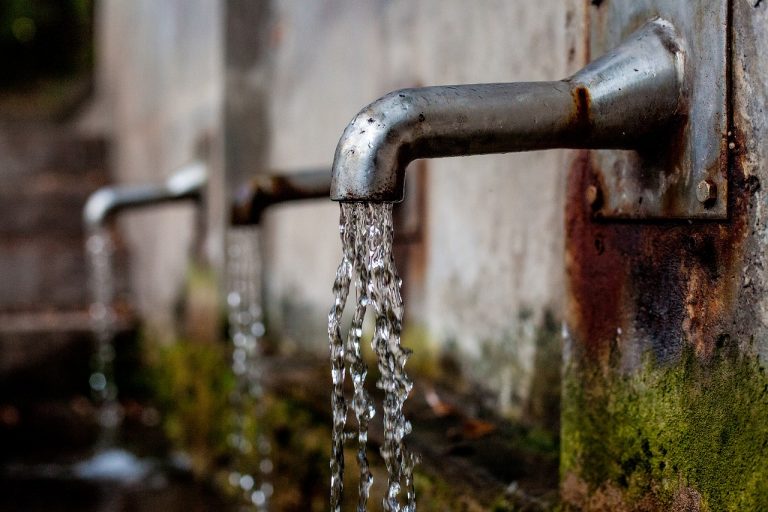Communities are required by law to test the safety of their drinking water and compile an annual Consumer Confidence Report to be made available to the public. But experts have questioned the methodology of these reports. Absent expensive third party testing we truly don’t know what’s in our water.
Why is water quality a business story?
The story of Flint, Michigan, an economically disadvantaged town with severe levels of lead in it’s drinking water, demonstrated that clean water isn’t a luxury afford to all. Lead and other toxins show up most often in poor communities since lead leeches into water primarily from outdated plumbing, but water safety ultimately affects us all. Reports show that millions of Americans have been exposed to PFAS, a potentially cancer-causing family of chemicals, and that previous studies have “dramatically underestimated” the scope of the problem. There’s money made and money lost in dirty water. Water contamination has resulted in expensive lawsuits for businesses and governments that fail to uphold water safety standards, and private industry like filtration companies have profited handsomely from consumer fears of unsafe tap.
What is a water quality report and why are they often misleading?
Theoretically, water quality reports show the levels of chemicals and other agents in your community’s water, and compare the levels to standards set by the Environmental Protection Agency (EPA). Here’s a 2019 Phoenix water quality report as an example. You’re supposed to be able to look at your local water quality reportーofficially called the Consumer Confidence Reportーand determine if your water is safe. But these tests are often less-than-scientific. For example, even large cities that serve millions of households, schools and businesses are often required to test just 50-100 locations for toxins like lead, copper, arsenic and nitrate. Unless your location was a testing site, you don’t actually know what’s in the water. A location with “safe” water can easily border a home or building with older pipes leaching lead into the water.
Studies will often call your tap safe, even with unsafe levels of a toxin. For example, the 2019 Phoenix report calls the cities water “high quality” and “superior.” But on page 4, lead levels were detected at 3 parts per billion. The EPA’s action level for lead is 15 ppb, but the agency itself has said that no level of the toxin is safe to drink. You’ll also notice in the report that only 54 taps were sampled for lead and copper, even though Phoenix is home to over 1.6 million people.
Studies published online are often incomplete. In the case of the Phoenix report, consumers must make an effort to contact the department for a copy of the full report. EPA safety standards are also a subject of debate. In 2001, the agency reduced the arsenic drinking water limit from 50 to 10parts per billion. At the time, the organization considered setting the standard as low as 3ppb, but settled on 10, to “(balance) the costs for water system operators while reducing health risks,” according to Consumer Reports, an advocacy group that has long called for lowering the arsenic standard to 3ppb.
Tips for reporters
Learn the lingo. Studies often don’t take the time to define words or acronyms commonly used in reports. PPM, PPB, PPT are parts per million, billion and trillion and describe the level of concentrates in water. For example, the EPA standard for “safe” levels of PFAS should not exceed 20 PPT. The standard for arsenic is 10 PPB. MCL means Maximum Contaminant Level and MCLG Maximum Contaminant Level Goal, to name a few examples.
Look for inconsistencies. Does the study report safe water despite news reports of elevated levels of lead in area school’s drinking water? Monitor the news closely as it relates to water quality and contamination. Contaminations that could impact water quality often happen near military bases, oil refineries, factories and construction sites.
Understand the debate in your community. Follow watchdog organizations on social media. These groups will often post dates and times of relevant government meetings and help you get acquainted with water issues specific to your community. Keep tabs on industry trade associations and educate yourself on where your community’s water comes from, and how it is regulated. The best way to understand these complicated issues is to read what’s already been written in news reports. Research the names and organizations mentioned, and take note of those written about multiple times. Is a particular organization often sited as a polluter? Research that entity. Is a clean water advocate quoted across multiple stories? They may turn out to be a source, or point you in the direction of potential sources.
Use online tools to help in your research. A variety of tools are available online to help you get acquainted with the quality of water in your community. The EWG’s tap water database can help you find your state’s utility companies with water violations on their record and put water reports into perspective with health guidelines. SimpleWater evaluated state’s actions regarding lead levels in school tap water and assigned grades for each state. Keep in mind, SimpleWater operates a tap water testing service, so they have skin in the game, but the information is a good jumping-off point. Lastly, there are plenty of resource pages for reporters covering water issues likes ones here, here, here and here.










